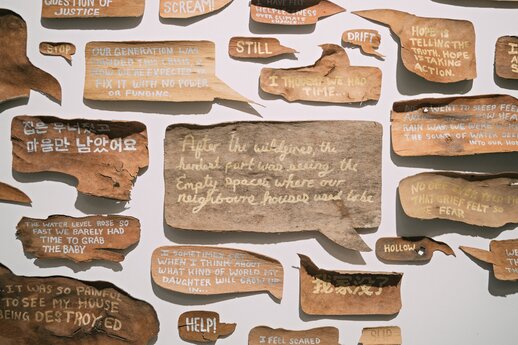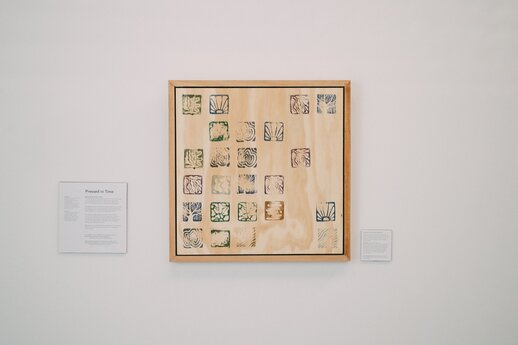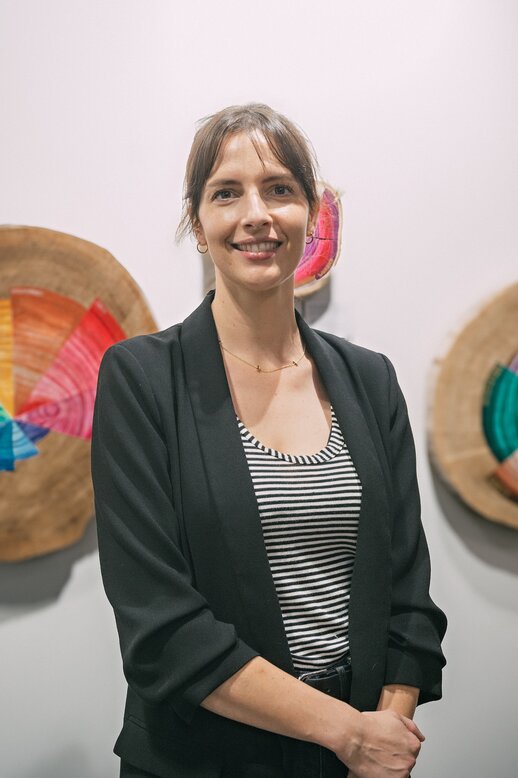Designing for Climate Emotion: How 'Nature Keeps Score' Brings Data to Life
In a world saturated with statistics about environmental collapse, Michaela Tracey-O’Connell’s postgraduate project Nature Keeps Score offers a radically different approach. Rather than presenting more data, Michaela invites audiences to feel it - using natural materials, metaphor, and emotional design to surface the human side of climate change.
Through her tactile, immersive Master of Design exhibition, she explores the power of design to build emotional resilience, open space for difficult conversations, and gently reconnect us with the planet - and with each other.
Why Design Matters in a Climate Crisis
At the heart of Nature Keeps Score is a core belief: that design has a vital role to play in addressing climate change - not by solving it outright, but by making space for care, conversation, and reflection.
Design shapes how we see, feel, and respond to the world,” Michaela says. “And with so many looming crises, I think it’s more important than ever to create small, powerful openings for empathy and change.”
Her work adds an emotional layer to the sustainability conversation - one that’s often overlooked. “After all the facts and figures, we also need to acknowledge how it feels to live through these times. That emotional documentation matters.”
A Project Rooted in Nature, Emotion, and Storytelling
Inspired by a desire to understand how people process climate anxiety, Michaela began with a central question: How might we design something that helps people move through climate anxiety - not by fixing it, but by making space for it?
The resulting installation used natural materials including bark paper, carved wood, and tree rings to evoke both the trauma and resilience found in the natural world. “Nature became both a material and a metaphor,” Michaela explains. “Trees hold memory, just like we do. They carry scars, but they recover too. I loved the idea that nature keeps score - quietly and continuously.”
The design process encouraged a slower, more mindful pace. Working with natural textures stood in contrast to the fast-paced, AI-driven design world we often inhabit. “It was really grounding,” she says. “It forced me to slow down and sit with discomfort - and that felt right, given the subject.”
Data Humanism in Practice
Rather than overwhelm audiences with graphs or percentages, Michaela turned to the principles of data humanism. She transformed global climate anxiety statistics into hand-painted tree rings, using colour to represent emotions such as fear, despair, and hope. These colours were drawn from an existing “climate emotions wheel,” mapping emotional states to visual tones.
"I didn’t want people to just read the data - I wanted them to feel it,” she explains. “By using texture, mark-making and metaphor, I aimed to make the data more intimate and emotional.”
A participatory element invited audiences to contribute their own emotional responses using stamps and mood boards, creating a sense of shared experience and personal connection. “People really engaged. Some even opened up about their own fears. That was powerful to witness.”
Fostering Emotional Resilience
Michaela was mindful of the emotional weight of her subject. Drawing on trauma-informed approaches, she aimed to balance honesty with hope.
I wanted people to feel recognised. To know that however they’re feeling, it’s valid. Climate emotion isn’t linear - it loops and shifts.”
Ultimately, she wanted to offer something “gentle and grounded” in contrast to the despair that often dominates climate discourse. “It’s not all doom and gloom. There are things we can do.”
One such tangible action came through her partnership with Trees That Count - donating a native tree for every participant in the project’s participatory installation. “That was a small but meaningful real-world impact. People really responded to knowing their involvement led to a tree being planted.”
One of the participatory pieces was co-created with Year 10 students at Napier Girls’ High School, offering younger audiences a chance to engage with climate emotions and contribute their voices to the project. The experience helped reinforce Michaela’s belief that people - especially young people - are willing and eager to engage, when given the right tools and environment.
Changing the Creative Process
Working with emotional and environmental themes reshaped Michaela’s creative approach. “It definitely slowed me down,” she admits. “But it also helped me let go of perfectionism. I realised it didn’t need to be flawless - it just needed to be honest.”
One of the most surprising insights, she says, was how ready people were to engage. “Even when the topic was heavy, people wanted to talk. They wanted to connect. That reminded me of the power of design - not just to inform, but to hold space.”
See more of Michaela's work: Website | LinkedIn
Find out more about Postgraduate Design here
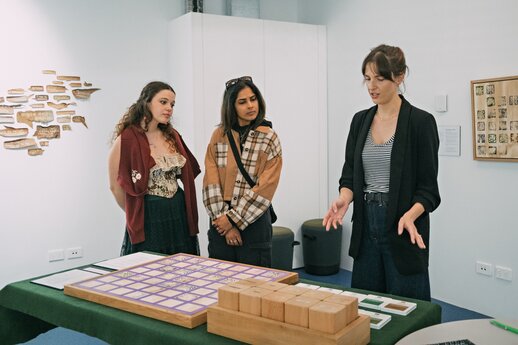
Michaela's project Nature Keeps Score transforms climate data into a tactile, emotional experience - using natural materials and storytelling to open space for reflection and resilience.
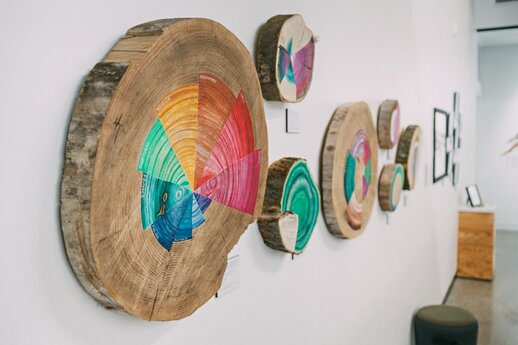
Using bark paper, carved wood, and hand-painted tree rings, Michaela visualised global climate anxiety - translating data into colour and form to reflect the emotional spectrum of fear, despair, hope, and resilience.
